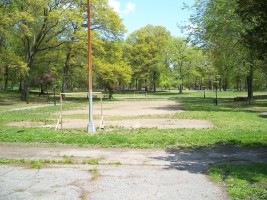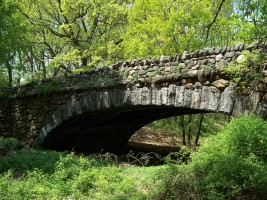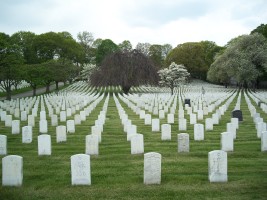Ridgewood Reservoir / Highland Park
Ridgewood Reservoir was completed on the Queens/Brooklyn line in the 19th century to distribute water from various points on Long Island for use by the citizens of Brooklyn. Ground was broken for the reservoir on July 11, 1856 and water was first raised on November 18, 1858.
Initially the reservoir had two basins and was filled with water that passed from Baisley Pond through an aqueduct (on what is now Conduit Avenue) to steam pumping stations at Atlantic Avenue and Chestnut Street. Those pumping stations pushed the water through a tube (running down what is now Force Tube Avenue) into Ridgewood Reservoir at the top of the hill. A third basin was added in 1863 and by 1868 the Ridgewood Reservoir held an average of 154.4 million gallons daily, enough to supply the City of Brooklyn for ten days at that time. Growing demand necessitated the expansion of the Brooklyn Water Works further west with wells and collection reservoirs up to 30 miles away. Further westward growth was halted by legislation enacteded to protect the water of Suffolk County.
The merger of the city of Brooklyn with New York City in 1898 lead to the integration of Brooklyn's water infrastructure with New York City's growing Catskill and Delaware water systems. Ridgewood Reservoir became increasingly obsolete and the need for pumping stations (in contrast to the gravity-fed Catskill system) made it expensive to operate. The Reservior was relegated to backup status in 1959. The basins became havens for illegal swimming (and associated drownings) and were finally decommissioned and drained in 1989.
With its draining and abandonment, the reservoir basins effectively returned to a natural state with the outer basins becoming home to a birch forest and the central basin becoming a grassy marsh. Despite being encompassed on all sides by urban development, the reservoir also became a sanctuary for diverse animal life, including 137 different documented species of birds.
The reservoir is bordered on the south and west by Highland Park, which was created on the land immediately surrounding Ridgewood Reservior that was purchased by the City of Brooklyn in 1891 under the jurisdiction of the Highland Park Society. Between 1901 and 1905 the Brooklyn Department of Parks began improving the area with several structures, a rustic bridge, roads, footpaths, a flower garden and a new lake and fountain. In 1905, the City expanded the park by purchasing the Shenck estate just to the south of the Reservoir. The final expansion occurred in 1906 with purchase of a third parcel to the west from the Department of Water.
The park sits on the border between Queens and Brookly and in its early days became a recreational haven for residents of both boroughs. The park ultimately included football fields, baseball fields, tennis courts and (in the winter) a frozen pond for skating. An aquatic garden was added in 1907 and a children's farm garden in 1915. In 1991 the western section of the park was renamed the Vito P. Battista Playground in memory of a local educator and community leader.
The maintenance of the park has ebbed and flowed over the years, with many of the fields receiving only minimal care. Despite this, in 2004 the reservoir was turned over to the Parks Department for integration into the park. In October of 2007, the Parks Commissioner Adrian Benepe quietly unveiled a contract to breach one of the reservoir basins and clear 20 acres for additional ball fields. However, on June 26, 2008, NYC City Controller William C. Thompson, Jr. rejected the initial contract for the new development, citing concerns about the environmental impact, increased truck traffic, and the vendor selection process.
Links
- NYC Department of Parks web page on Highland Park
- Historic photos of Highland Park
- Historic photos of Ridgewood Reservoir
- Save Ridgewood Reservoir: an organization dedicated to the preservation of the reservoir








